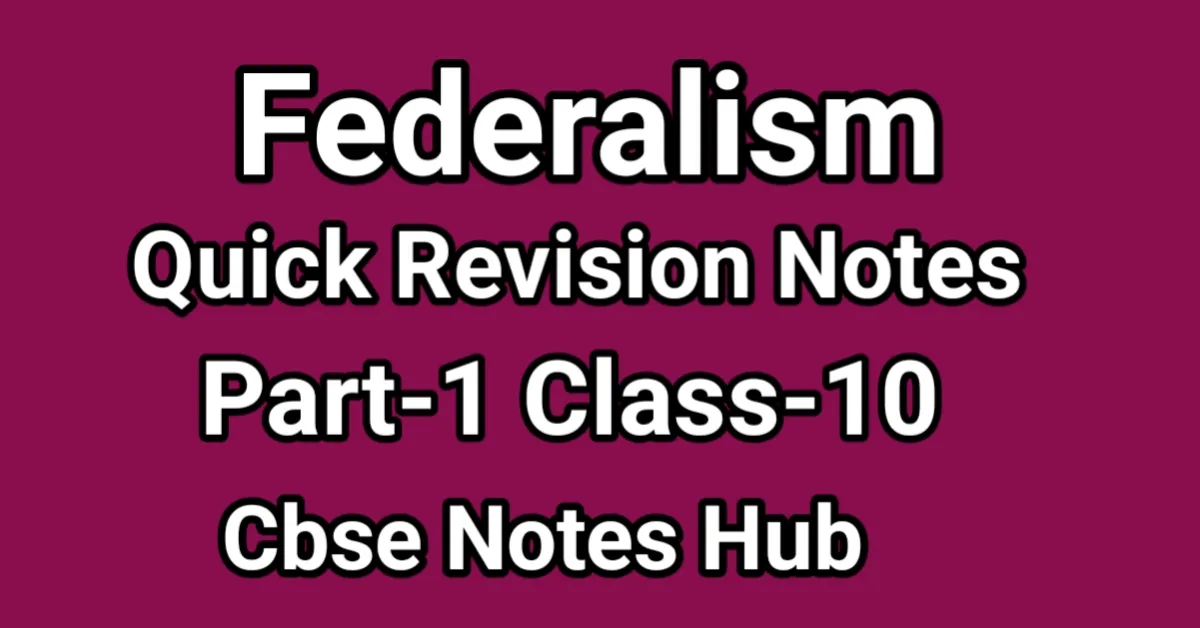“
“This post helps you understand what Federalism is, its key features and types, and how it differs from the Unitary form of government.”
Class 10 – Political Science: Federalism (Part 1)
What is Federalism?
Federalism is a system of government in which power is divided between a central authority and various constituent units of the country.
A federation usually has two levels of government:
- Central government
- State government
Both levels enjoy their power independent of each other.
Unitary System
In a unitary system, either there is only one level of government, or the sub-units are subordinate to the central government. The central government can pass orders to the provincial or local governments.
In a federal system, the central government cannot order the state government. The state government has powers of its own, and it is not answerable to the central government.
Both levels are separately answerable to the people.
Key Features of Federalism
- Two or more levels of government
- Each tier has its own jurisdiction in legislation, taxation, and administration
- Jurisdiction is specified in the Constitution
- The authority of each tier is constitutionally guaranteed
- Fundamental provisions cannot be changed unilaterally
- Amendments need consent of both levels
- The Constitution is interpreted by the courts
- The Supreme Court acts as an umpire in case of disputes
- Sources of revenue are clearly specified
📘 Must Read:
📌 Power Sharing – Class 10 Important Questions and Answers
Objectives of Federal System
- To safeguard and promote national unity
- To accommodate regional diversity
An Ideal Federal System Has Two Aspects
- Mutual trust
- Agreement to live together
Types of Federations
Coming Together Federation
- Independent states come together to form a bigger unit
- They pool their sovereignty but retain their identity
- All units have equal power
- Examples – USA, Australia, Switzerland
Holding Together Federation
- A large country divides its power between the central and state governments
- The central government tends to be more powerful
- Some units may have special powers and unequal status
- Examples – India, Spain, Belgium
Source: NCERT
📘 Also Read:
📌
Unification of Germany, Italy and Britain – Class 10 Notes
📌
Source-Based Questions – Class 10 History Chapter 1

